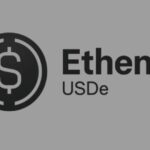With the shutdown delaying NFP and clouding rate odds, here’s how the macro feed that drives ETF flows could wobble BTC liquidity.
October opened with a risk spike as the U.S. government shut down, yet Bitcoin (BTC) was pushed higher alongside other majors while fresh records were printed by gold.
Bitcoin Rises as U.S. Data Blackout Clouds Fed Outlook and ETF Flows
As of press time, Bitcoin traded at $117,402.84, up by 3% in the past 24 hours. The immediate read is a classic “chaos bid.”
Yet, beneath the knee-jerk, there’s a more important mechanism for crypto. A data blackout blurs the Federal Reserve’s path and, by extension, the flows into spot exchange-traded funds (ETFs) that have become Bitcoin’s dominant marginal buyer.
When Washington goes dark, so do the numbers that anchor global macro. The Bureau of Labor Statistics, the Bureau of Economic Analysis, and the Census Bureau suspend their collections and publications during a shutdown.
As a result, the monthly U.S. jobs report, consumer price index (CPI), and retail sales either slip or go missing entirely. This deprives rates traders and ETF allocators who key off those markets of the inputs they use to price cuts into the curve.
In this cycle, it’s especially acute because investors were already leaning toward further easing in 2025. Non-farm payrolls (NFP) and CPI are being removed at precisely the moment positioning is sensitive. This tends to widen confidence intervals and lift volatility.
Shifting Market Conditions
Flows ride the dollar and real yields. The dollar was initially pressured by the shutdown, and markets were nudged toward earlier cuts, a mix that has historically been kind to non-yielding assets.
That’s one likely reason for the upside in crypto markets due to the funding lapse. However, the exact mechanism can flip, as the absence of data spooks the market into a “wait-for-proof” stance, and the dollar can firm amid fading risk appetite.
A risk-off environment could starve ETFs of fresh inflows and tighten spot liquidity, which is why the blackout amplifies whichever macro narrative emerges next.
There’s also a plumbing angle. A shutdown pushes financial regulators onto skeleton crews, which slows nonessential processing.
For the whole crypto market, this can mean delays in ETF actions or other administrative timelines, such as the approval of altcoin products. Although this is not a structural problem, it removes discrete catalysts that often concentrate flows over short windows.
Additionally, Asia’s Golden Week already begins to hollow out order books during the first days of October. When this is matched with a U.S. data vacuum, it creates a setup where smaller orders have a greater impact on the price than usual.
The holiday lull alongside the shutdown accelerates volatility. That creates an environment where ETF creations and redemptions cause the price to swing more abruptly, squeeze travel farther, and intraday liquidity takes the brunt of it.
Markets Take Different Directions
The current landscape presents opportunities for diverging paths in the days to come.
Under a bullish scenario, the missing NFP and CPI keep the Fed’s hand soft in investors’ minds, the dollar stays on the back foot, and the “policy-put” narrative continues to be added to by allocators.
The crypto market has historically recorded strong performance during fourth quarters, further lending weight to the potential. The price hike on October 1 fits that template and echoes past shutdown weeks in which markets leaned into hedges and alternatives.
In the bearish version, the blackout becomes a vacuum that stalls conviction. Without fresh macro prints, adds are deferred by managers, spreads are widened by dealers, and any negative shock locks in a higher bar for new money.
If that coincides with the regulatory slow-walk on nonessential actions, the market can drift into a “catalyst desert,” where ETF net creations cool and on-exchange depth shrinks. That mix tends to penalize high-beta assets, including Bitcoin.
Practically, the watchlist is simple. The first topic is the duration of the shutdown. As the tape trades data-blind for a longer period of time, the more each private proxy will swing rates, which could result in those swings being transmitted into the spot market by ETFs.
The second topic is the dollar and real yields. If they both soften while Washington is closed, dip buyers usually step into BTC. Conversely, ETF demand fades, and the path of least resistance is sideways to lower if they firm.
The final topic is liquidity conditions during and after Golden Week. The thinner books magnify moves in both directions. The net effect is more variance around the trend, not a new trend by itself, and variance is a tailwind for disciplined flow-driven strategies.
The U.S. data blackout doesn’t magically funnel capital into Bitcoin, but instead, the macro plumbing that feeds ETFs is rerouted, and more price change is pushed through less depth.
If the shutdown passes quickly and the next data print tilts dovish, the “chaos bid” can harden into sustained inflows. If it drags or the proxy data leans hawkish, the absence of official numbers will feel less like freedom and more like fog.















